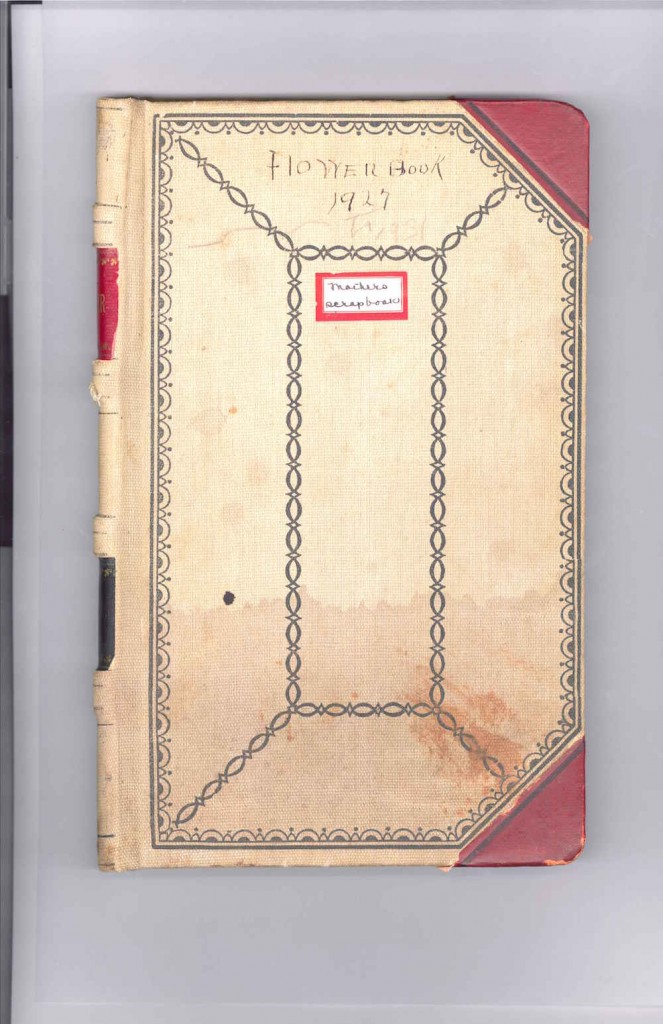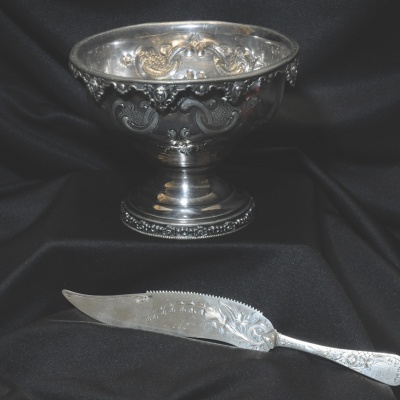Digging in the Past

Some correlations with the past are obvious and self-evident. At a property such as Hills & Dales Estate, the importance of the connection to our history is a clear example. The ability—no, the necessity—of delving into every facet of the estate’s bygone days is both a treat and a welcome task. On cold winter days, thankfully there is no shortage of items to sift through, for the Callaways were record keepers of many things. Their saved receipts, invoices, jotted notes, recipes, letters and clippings abound in such quantity as to ensure job security for their organizers for some time to come. One can choose from an array of topics and, if you are especially interested in the estate’s history, there is enough material for fascination almost ad infinitum.
Of course, the ultimate historical pièce de résistance at Hills and Dales is Mrs. Ferrell’s terraced garden that has graced the property since the 1840’s. One could rightly say that the estate as we know it would have never existed if not for the boxwood garden that enthralled Fuller Callaway Sr. from his boyhood. And for historic garden lovers, the chain of happy coincidences, or providence as many view it, that preserved the garden is worth noting. In looking back, if any one link in the chain of events had not occurred, we would have none of this to talk about or enjoy. Perhaps that is part of the thrill of poring over old objects; the limited nature of our ability to go back in time is directly proportional to how much of the past has been saved. Thank goodness some devotees have taken the time to do it, even before historic preservation was a popular concept or vogue cause.
Ida Cason Callaway (Mrs. Fuller E. Callaway Sr.) was just such a steward for Ferrell Gardens. Although an accomplished and enthusiastic gardener herself, we know from written sources that she and Mr. Callaway sought out professional advice about the care of the extensive plantings in the garden and were given recommendations for the alteration of certain design features. The proposed changes were handled with a commendable amount of restraint and, although all gardens inevitably evolve over time, what Ida ultimately left for her youngest son (Fuller Jr.) and daughter-in-law (Alice) was a largely intact version of Sarah Ferrell’s antebellum creation. She undoubtedly also passed on some of her preservation philosophy so that we can still walk the boxwood lined paths begun so many years ago.
One cherished piece that gives us a bit of a window into Ida’s gardening interests and accumulated wisdom is a previously used accounting ledger that, in typical thrifty fashion, she co-opted for some of her gardening records. There among the pages of payroll amounts and rent receipts from one of Fuller’s business endeavors remained plenty of blank space upon which to write her lists of plants and pin pertinent clippings. One can imagine her thinking it ‘just the thing’ upon finding it. She gave it the inscription “Flower Book 1927 to 1931,” although there are entries from 1933 and 1935 included as well. Her daughter-in-law Alice saved it and placed a label on the front that reads “Mothers Scrapbook.” Much can be gleaned even from her haphazard journaling and notes. Where things were planted and, of course, what they were reveal what Ida wanted to grow and how she planned for their display. Also, the names of popular varieties from that time are recorded, meaning that we can research to see if they are still available. Every scrap of information then becomes a useful puzzle piece to be used to authenticate the presentation of the gardens in a more accurate historical context. But perhaps that sounds too dry, especially if one is not a historian by nature. Ah, but Ida’s heart and soul are in there too and that is never boring. Here’s an apt example, an excerpt from an entry on page 257:
A glorious morning in May-after a week of intermittent rainfall, the Sun, “god of Day” arose in all of his majesty, warming the winter chilled earth. The Spring awakened seeds into life. The birds began their love calls. Earth seems so fair. What must Heaven be if this old world radiates beauty as it does! I am very busy too, continuing my lovely garden so my children and grandchildren can enjoy Grandma’s handiwork in the future years.
Notations in Ida’s flower book include many lists for orders of plant material placed during the years that the book covers. mentions include purchasing hundreds of tulips from Henderson’s and Vick’s, one hundred ‘regale’ lilies from Concord Nurseries, delphiniums from Pudors, Inc. in Puyallup, Washington, roses from Thomasville Nurseries, fourteen fruit trees and ten ‘flaming giant’ raspberries from Stark Brother’s Nurseries & Orchards Co. and seeds for various flowering annuals, indicating some of the diversity of her botanical interests. However, she also used the ledger book to save a few things as well—two pressed flowers, possibly dahlias, between pages 178 and 181 (179 /180 were torn out), a collection of flower show ribbons, clippings of horticultural articles, and even scenic postcards she had received in the mail. With December so recently behind us, it is interesting that lists in her scrapbook also show who Christmas cards and presents were sent to and received from in 1929 and 1930… an amusing clue that perhaps the holidays were as consuming, even to push aside gardening for a few weeks, as they are now!


